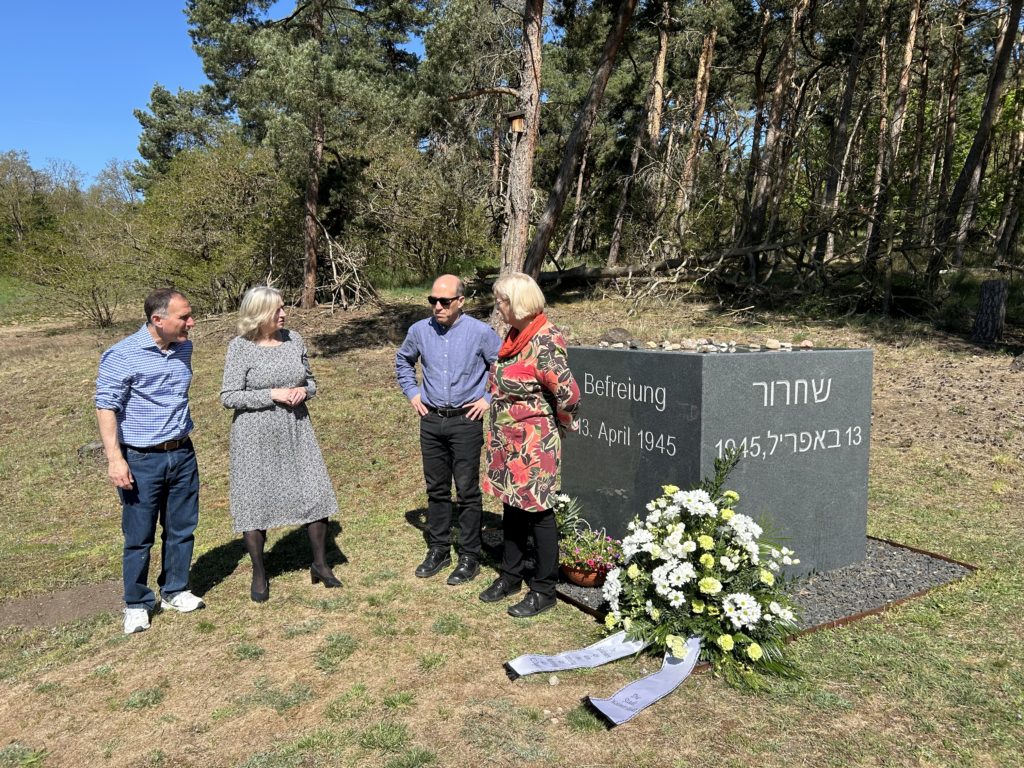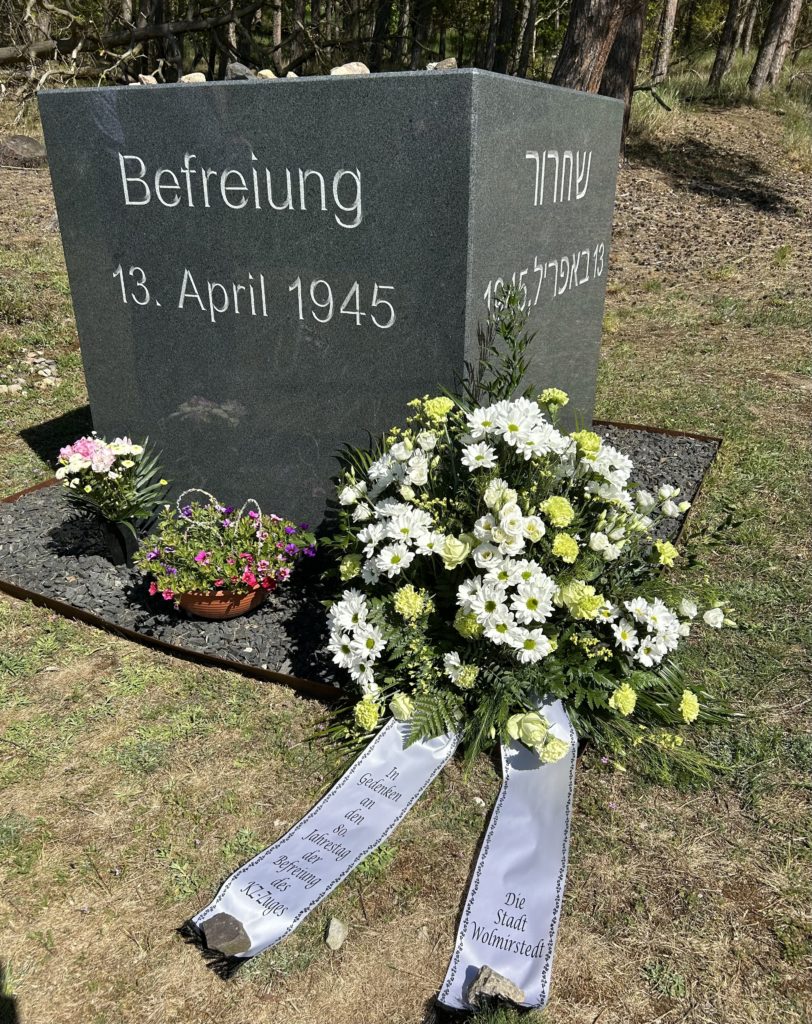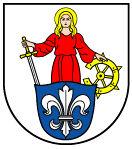80 years of the stranded train Farsleben: Descendants of prisoner lay down flower arrangements with mayor and museum director
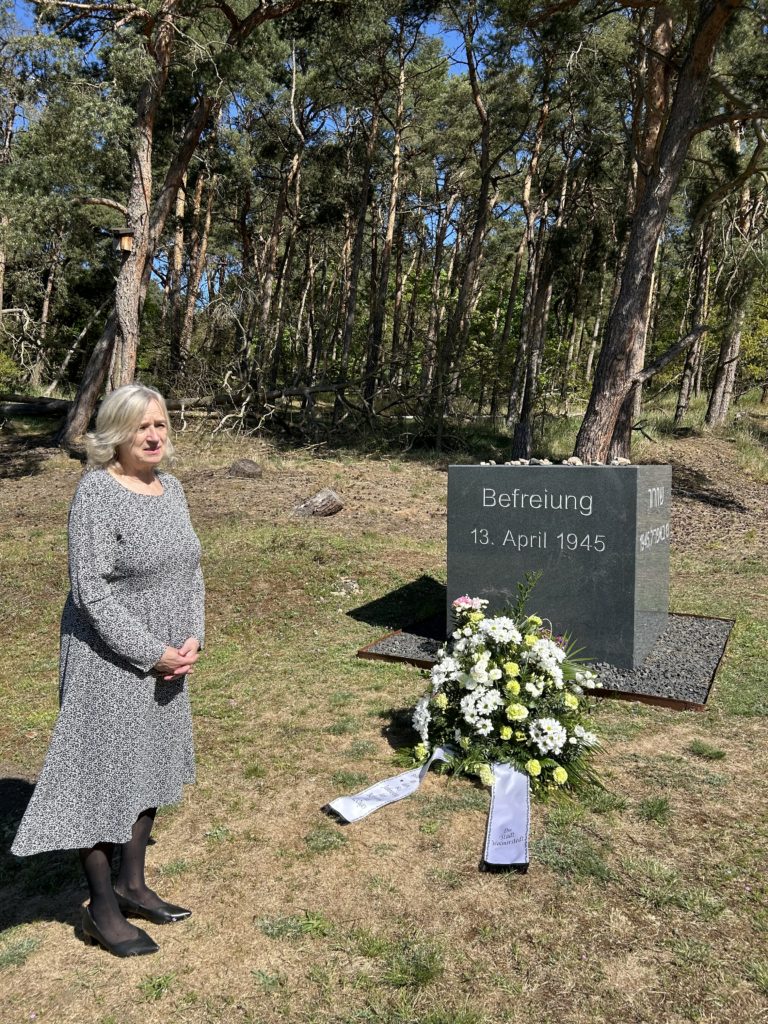
80 years ago, on April 13, 1945, US soldiers evacuated around 2,500 prisoners who were to be taken on a train from the Bergen-Belsen concentration camp to the Theresienstadt concentration camp. The train had already been stranded near Farsleben the day before and was unable to continue its journey due to air raids. The Americans liberated the emaciated people and took them to Farsleben and Hillersleben for initial care. Among the survivors were more than 500 children and young people. This is why there are still some contemporary witnesses today.
It was the 80th anniversary of this historic day, which also left its mark on many Farsleben residents and their families. To mark this anniversary, Wolmirstedt’s mayor Marlies Cassuhn was keen to commemorate the events of 80 years ago. She laid a flower arrangement together with Wolmirstedt’s museum director Mary-Anette Pilz, who has been working for years to reappraise and commemorate the stranded train. Dan and Michael Elbaum were also present. The two brothers had traveled from the United States to the site where their own father was liberated 80 years ago.
Together with Dan and Michael Elbaum, Marlies Cassuhn and Mary-Anette Pilz commemorated all the people who were once on the concentration camp train and also those who lost their lives in the concentration camps.
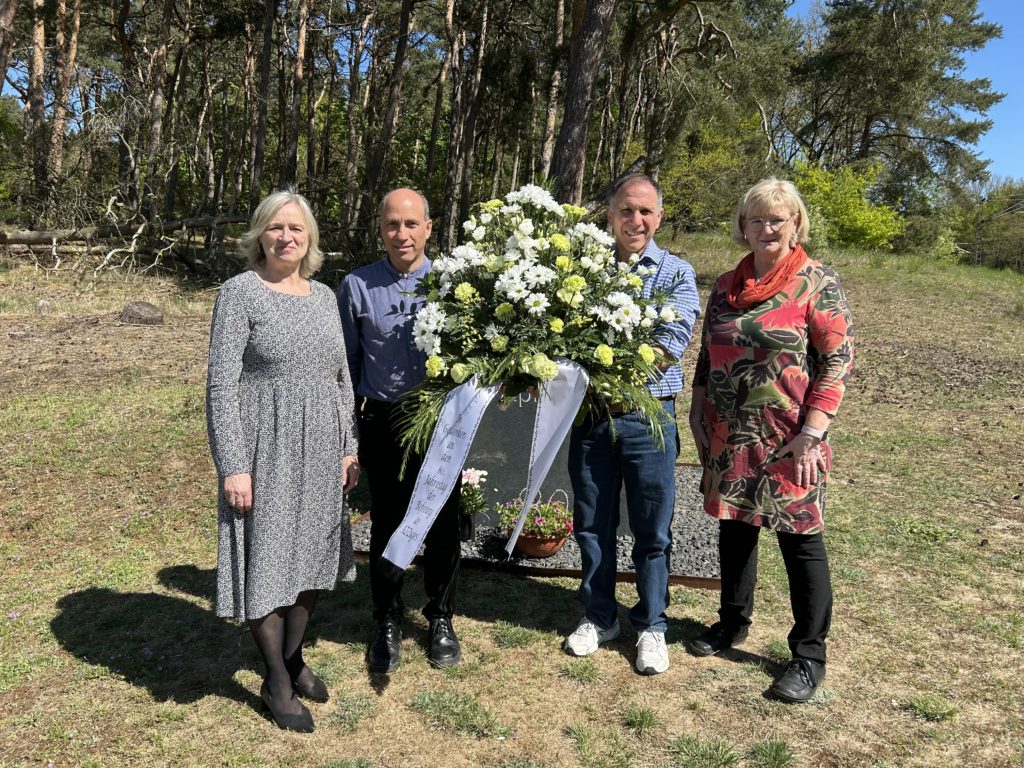
The following can be read about the stranded train on the homepage of the Wolmirstedt Museum:
The story of the stranded train began in the Bergen-Belsen concentration camp (KZ). Used as a prisoner of war camp since 1940, the Schutzstaffel (SS) also set up a so-called “exchange camp” here from July 1943. By December 1944, at least 14,600 Jewish prisoners with foreign citizenship had been transferred here and were initially exempt from extermination. They were to be exchanged for interned Germans in other Western countries or “sold” for foreign currency.
The majority of those imprisoned in the camp came from Hungary, but there were also many Dutch, Slovakians, Poles and almost 100 Greeks among them.
In April 1945, around 6,700 exchange prisoners from the Bergen-Belsen concentration camp were to be evacuated ahead of the approaching Allied troops. A total of three trains left the Bergen-Belsen concentration camp bound for Theresienstadt. On April 7, 1945, one of these evacuation transports with over 2,500 Jewish prisoners was assembled at the train station in Celle. The train set off at around 2 p.m. on April 8, 1945. Without sufficient food and medical care, many people died in the completely overcrowded wagons.
On April 12, 1945, the train came to a halt in a grove between Zielitz and Farsleben – the planned onward journey to Magdeburg was not possible due to air raids. The woodland in which the train stopped served as a last natural cover against the bombardment. Around noon on April 13, 1945, two US reconnaissance tanks of the 743rd Infantry Division of the 9th US Army reached Farsleben. The Americans evacuated the emaciated people and housed them in Farsleben and Hillersleben for initial supplies.
There were more than 500 children and young people among the survivors. As a result, there are still many surviving witnesses.
An exhibition in the Wolmirstedt Museum on the castle grounds traces the events of that time. The exhibition is bilingual (German/English).
In May 2023, an employee of the Wolmirstedt Museum accidentally discovered a film that documented the moments of the liberation of the concentration camp train by US soldiers in Farsleben between April 13 and 17, 1945. Now, 78 years after the event, this previously unknown film has been unequivocally linked to the stranded train from Farsleben. The film document, which is in the National Archives in the USA, was located there thanks to our tip from former high school teacher Matthew Rozell. Since this discovery, Spanish, American, Israeli and British newspapers have reported on this sensational find.
In the meantime, some survivors or their relatives who recognized themselves in the film have contacted Matthew Rozell and the Wolmirstedt Museum. The film can be viewed on YouTube or at: https://teachinghistorymatters.com/tag/matthew-rozell/ Matthew Rozell and the filmmaker Maik Edwards had the film and individual images from it colorized.
